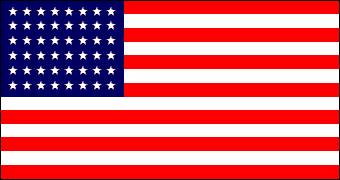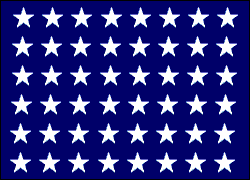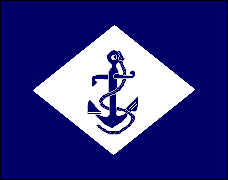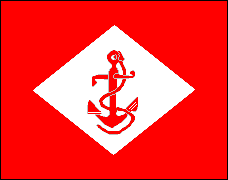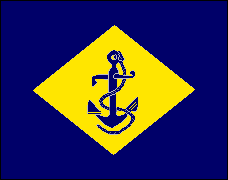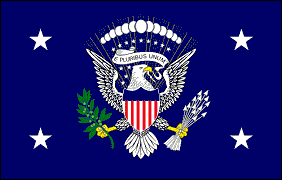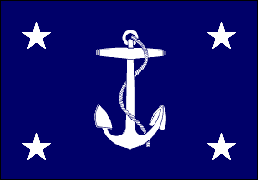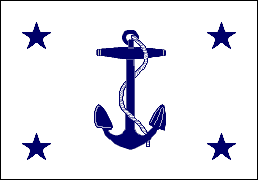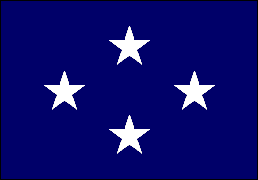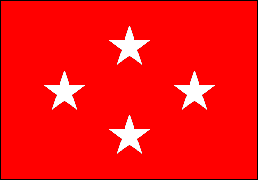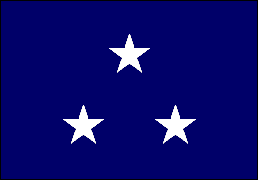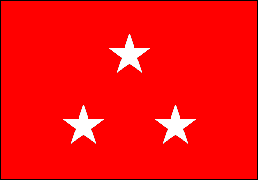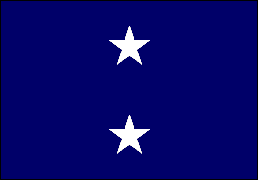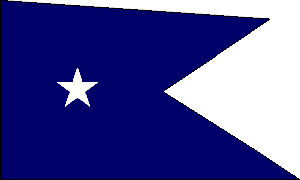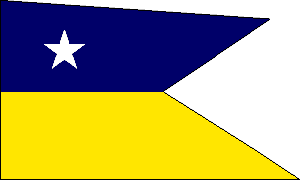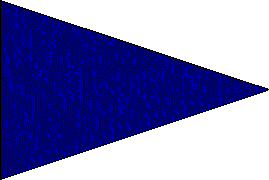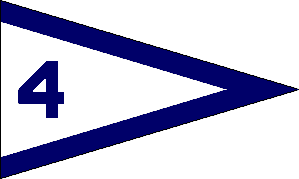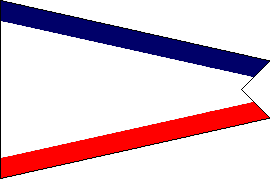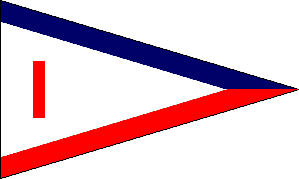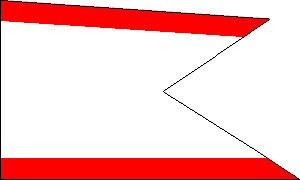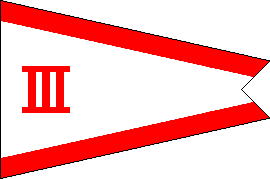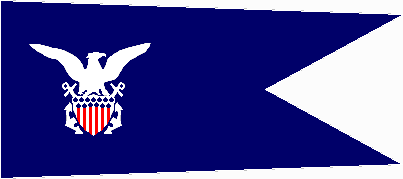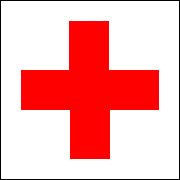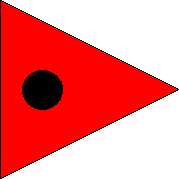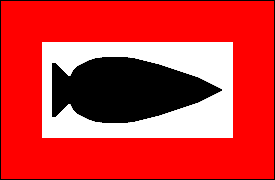UNITED STATES NAVY IN THE GREAT WAR
ENSIGNS & FLAGS • 1914-18
By 1914, the national flag and ensign of the United States had 48 stars. The naval jack—officially titled the Union Jack—was the union or canton of the ensign. By regulation it was the same size as the canton of the ensign with which it is being flown. The commission pennant, worn at all times by all US warships in commission, was identical to the one used today. When a ship was under the direct command of a flag officer, the appropriate rank flag was flown in place of the commission pennant.
In 1914 it was still the practice for naval crews to be formed into units for combat ashore if necessary. Accordingly, there were Navy battalion flags for such units: dark blue for infantry and scarlet for artillery. The infantry battalion flag was also used for parades and other ceremonies in which the Navy was represented. The Navy's organized reserve, called the Naval Militia, had its own distinctive flag and commission pennant.
The presidential flag of the period was that adopted in 1916 and used until 1945. The flags of the Secretary and Assistant Secretary of the Navy were similar to those used nowadays. Rank flags were also the same as the ones used nowadays, except that versions with scarlet fields were used by subordinate admirals when two or more of the same rank were present. There were also broad pennants for commodores and commodores of the Naval Militia. The triangular senior officer's pennant was plain blue. Command pennants for flotilla, submarine force and patrol force commanders were similar to those used today. Merchant marine masters who held commissions in the Naval Reserve were authorized to display a blue pennant with the Navy insignia at the hoist. Also illustrated are some special flags, including the Battle Efficiency Pennant, awarded to ships that performed exceptionally well during practice shoots and battle drills.
The US Navy of the First World War era was impressive as regards capital ships, with some of the world's most powerful dreadnoughts in commission. On the other hand, the Navy's cruiser force was scanty and obsolescent. There were no modern light cruisers to match the six-inch gunned ships in British and German service, while the armored cruisers were slow and weakly protected. Flotilla craft (torpedo boats and destroyers) were also insufficient. The latter deficiency was addressed by an enormous building program that produced over 300 of the famous flush-decked four-stack destroyers. Few of these, however, were ready in time to serve in the war and many of them were laid up immediately after completion. In the Second World War, however, the old "four-pipers" gave sterling service as convoy escorts, fast transports, seaplane tenders and destroyer minesweepers. Fifty were transferred to the Royal Navy in 1940.
The Navy's principal wartime missions were convoy escort, particularly of those convoys that brought the American Expeditionary Force to France. A battle squadron of dreadnoughts was sent to Scapa Flow to serve with the British Grand Fleet. The Navy also played a major role in the laying of the North Sea Mine Barrage, intended to prevent U-boats from reaching the Atlantic. Many older ships, such as the protected cruiser USS Olympia of Manila Bay fame, were hastily refitted and pressed into service as escorts and patrol vessels. The largest warship lost was the armored cruiser USS San Diego. On 19 July 1918, while on passage from Portsmouth Naval Yard to New York, she struck a mine laid by a German U-boat. The damage compromised the ship's watertight integrity and she sank slowly, taking six members of her crew to the bottom with her.
Image Added November 2016
Flag of the President of the United States
|
NATIONAL ENSIGN |
UNION JACK |
|
COMMISSION PENNANT |
|
|
NAVAL MILITIA COMMISSION PENNANT |
|
| UNIT FLAGS |
|
|
INFANTRY BATTALION |
ARTILLERY BATTALION |
|
NAVAL MILITIA |
|
|
PRESIDENT & DEPARTMENT OF THE NAVY OFFICIALS |
|
|
PRESIDENT OF THE UNITED STATES |
|
|
SECRETARY OF THE NAVY |
ASSISTANT SECRETARY OF THE NAVY |
|
FLAG OFFICERS |
|
|
SENIOR PRESENT |
SUBORDINATE |
|
|
|
|
ADMIRAL |
|
|
|
|
|
VICE ADMIRAL |
|
|
|
|
| REAR ADMIRAL | |
|
COMMODORE |
COMMODORE, NAVAL MILITIA |
|
SENIOR OFFICER PRESENT AFLOAT |
|
|
COMMAND PENNANTS |
|
|
DESTROYER FLOTILLA |
DESTROYER DIVISION |
|
SUBMARINE FORCE |
SUBMARINE DIVISION |
|
DISTRICT PATROL FORCE |
SECTOR PATROL FORCE |
|
NAVAL RESERVE OFFICER |
|
| MISCELLANEOUS FLAGS & PENNANTS |
|
|
HOSPITAL SHIP |
|
|
BATTLE EFFICIENCY PENNANT |
SUBMARINE WARNING |
